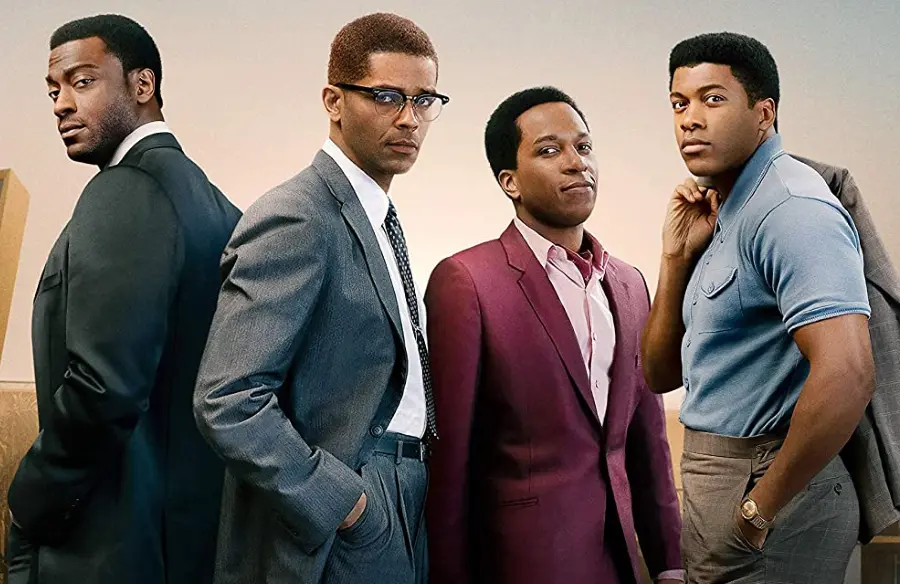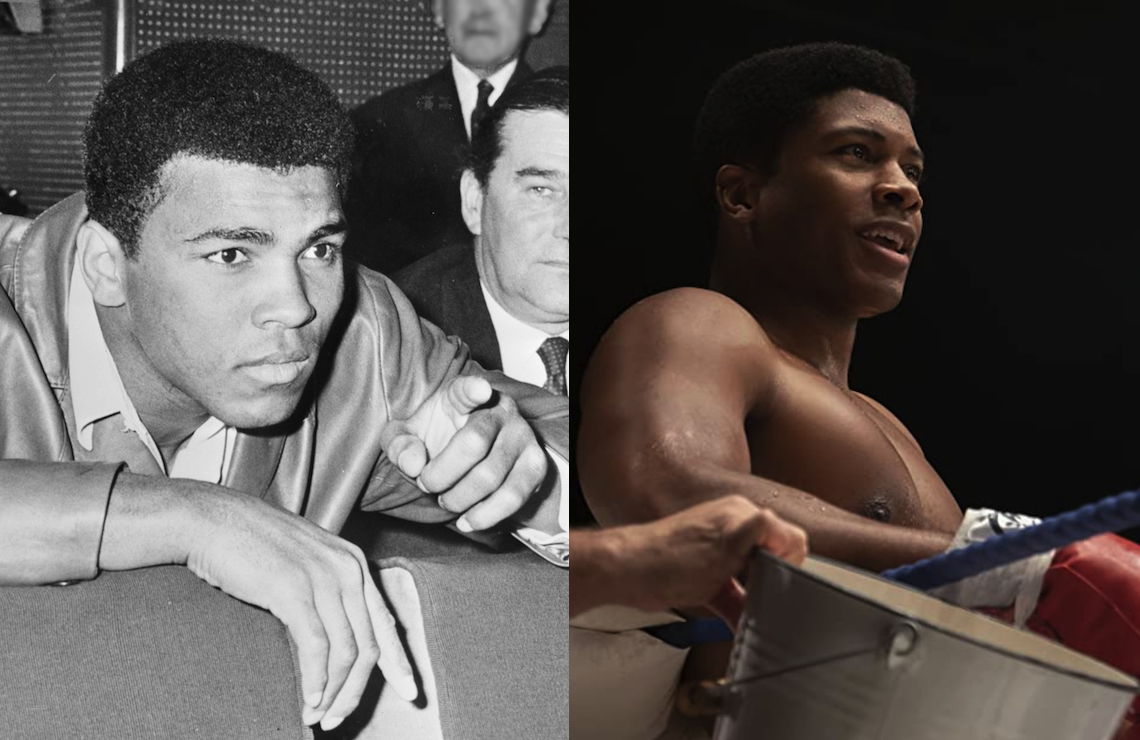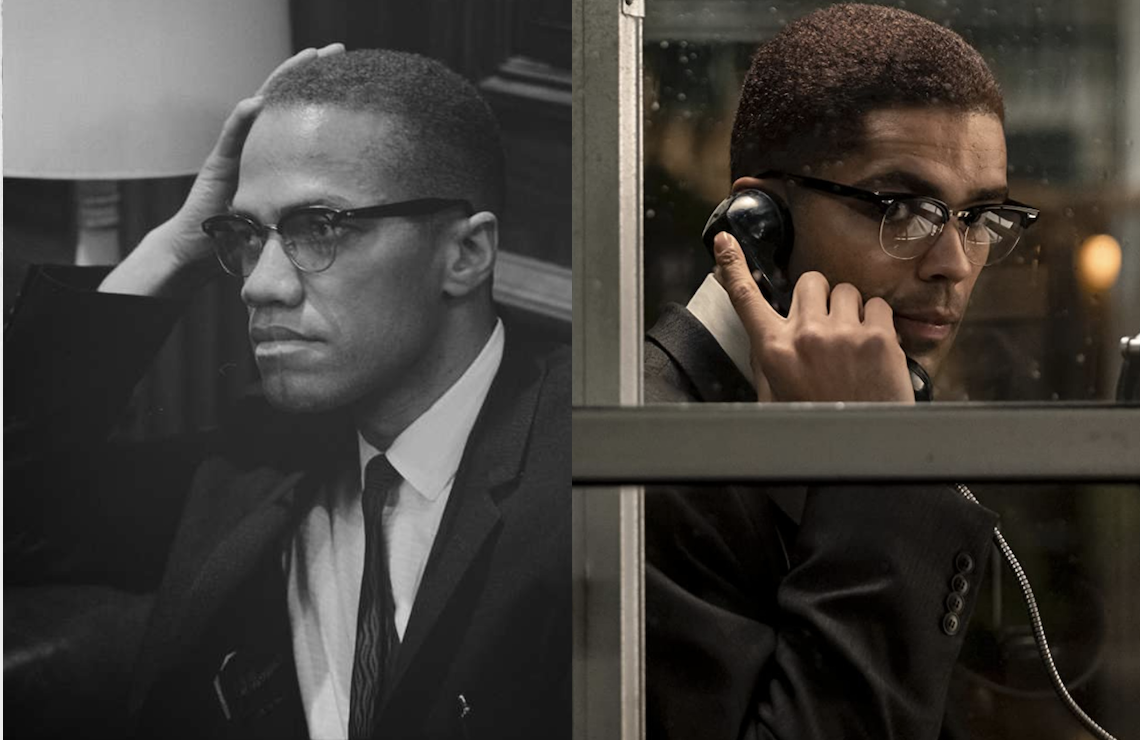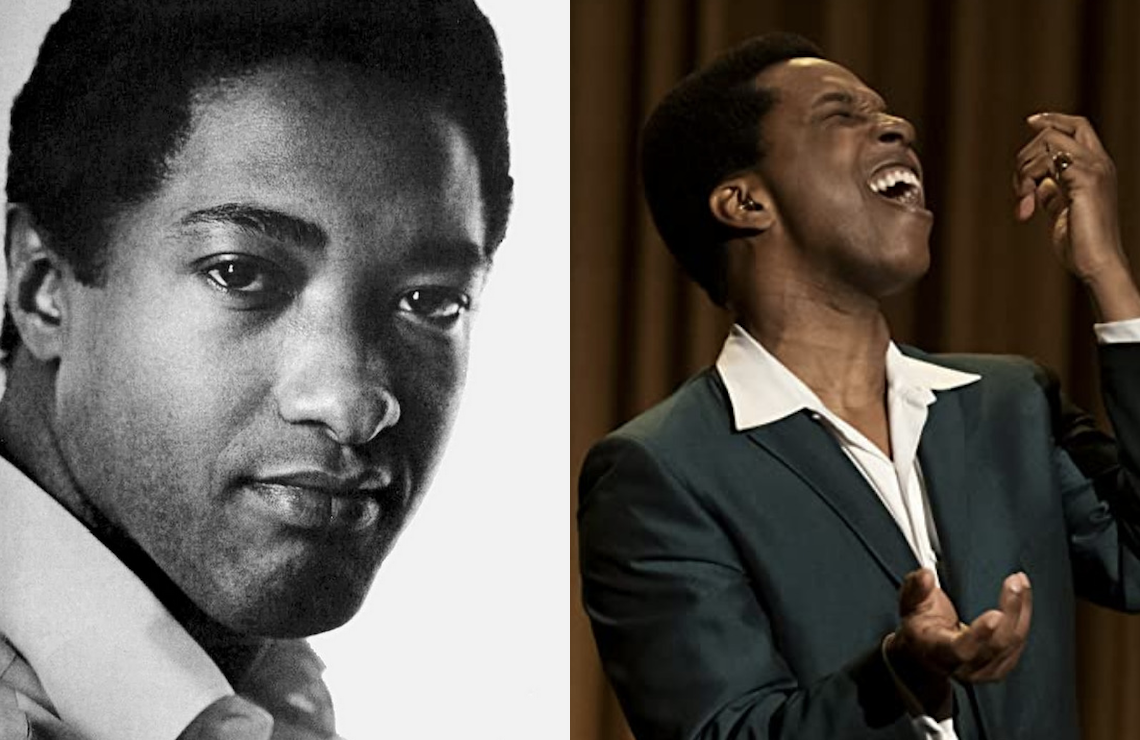Separating Fact from Fiction in One Night in Miami
-
 Aldis Hodge, Leslie Odom Jr., Eli Goree, and Kingsley Ben-Adir in One Night in Miami. (Amazon)
Aldis Hodge, Leslie Odom Jr., Eli Goree, and Kingsley Ben-Adir in One Night in Miami. (Amazon)The thing about Peak TV is that the beast always needs to be fed. These days all kinds of matter gets turned into TV — novels from the ’80s, quirky anthologies, old HBO films. And plays! Two of the leading Oscar contenders this year are both adaptations of plays that were produced by streaming TV channels.
First there was Netflix’s adaptation of the August Wilson play Ma Rainey’s Black Bottom. Now comes Amazon’s adaptation of One Night in Miami, a 2013 play by Kemp Powers that marks Regina King’s directing debut. Writing for stage is only one of Powers’ superpowers — he also penned five episodes of Star Trek: Discovery and is the co-director of the Disney Pixar film Soul. His idea for One Night in Miami is, as Variety put it, crackerjack: Put four historically significant figures in a room at an inflection point for Black America, and get them talking.
Like Ma Rainey’s Black Bottom, you’ll enjoy One Night in Miami more if you know the history behind it.
The scene
Miami Beach, February 25, 1964. Three months after JFK. Two weeks after Beatlemania hits New York. Life in America seems to be getting back to normal, and as a sign of that, there’s a major heavyweight title bout tonight at the Miami Beach Convention Hall. The champ, Sonny Liston, is heavily favored to destroy his showboaty opponent, Cassius Clay, the 1960 Olympic gold medalist.
If you’re a sports fan, you’ll know this is the night Clay shocked the world. Liston, “The Big Bear,” was as dangerous as any fighter in the ring. But Clay’s energy and ability to avoid Liston’s ferocious hooks wore out the champ. Also, Liston was nursing a sore shoulder. When he failed to answer the bell for the seventh round, Clay was the heavyweight champion of the world.
That’s the story you likely know. One Night in Miami is about the story you don’t know — because Powers dreamed it up. Among the notables in attendance at the real-life fight were NFL great Jim Brown, sweet-toned R&B singer Sam Cooke, and Nation of Islam firebrand Malcolm X. After the fight, the new champ and Malcolm X retire to the run-down, Negroes-only motel where they are staying, and are joined by Cooke and Brown. The four men spend the rest of the evening talking about their lives, their dreams, and their country.
One Night in Miami reminds me of Peter Kreeft’s unproduced 1982 dialogue Between Heaven and Hell, which imagines John F. Kennedy, C.S. Lewis, and Aldous Huxley having a “great conversation” in the hours after all three men died on November 22, 1963. As with that dialogue, One Night in Miami didn’t really happen, but that doesn’t mean it won’t ring true. Powers has taken each man’s biography and bent it ever so gently to serve the purposes of his play. The film version will resonate with Black Lives activists and their allies, who could use it as the starting point for some great conversations of their own.
Muhammad Ali

The movie opens in late 1963, with Clay fighting the British champion Henry Cooper. Dancing around Cooper and taunting him, Clay doesn’t see an incoming punch and gets leveled. Narrowly avoiding disaster, Clay recovers to win the bout and set up his match with Liston. But the boxer’s antics exasperate his trainer Angelo Dundee (Michael Imperioli), who wishes he would just get out there and fight. Knowing that Liston is the overwhelming favorite, Clay creates his first famous rhyme: “If you want to lose your hard-earned money, go ahead and bet on Sonny!”
As he explains to Malcolm X in One Night in Miami, Clay modeled his persona on TV’s biggest name in professional wrestling, Gorgeous George, the original bad guy known for his pompadour and peacock strut. “Everyone in that arena pays $100 to see George lose,” Clay tells Malcolm admiringly. “The way I figure it, win or lose the fight, George has already won the war.” Becoming a showman is part of Clay’s reinvention from a promising pugilist, backed by an all-white Louisville investment group, into “The Greatest,” the most famous Black man in the world — and, as he will announce two weeks after Miami, a Muslim who shall henceforth be called Muhammad Ali.
Clay/Ali is played convincingly in One Night in Miami by Eli Goree (The 100). Ali’s character represents the growing anger and radicalization of many young Black men in America as they seek their rightful place in a white-run world. Through the influence of the Nation of Islam, and his own self-education, Ali will make the stunning decision in 1966 to refuse military service in the Vietnam War, which will cost him his title.
Malcolm X

Though considered one of the most polarizing public figures in America for his fiery speeches denouncing white people as devils, Malcolm X is a changed man by early 1964. He’s disillusioned in his spiritual leader, The Honorable Elijah Muhammad of the Nation of Islam. Though indebted to Muhammad for giving him purpose while he was in jail, Malcolm knows the Nation’s inner workings all too well, and sees how Muhammad has abused his power in violation of the Quran. More significantly, Malcolm has been on a spiritual quest that has led him away from Muhammad’s splinter group and back to orthodox Islam, which he realizes is a religion of peace and understanding, not division and hate.
Muhammad has silenced him, and Malcolm is looking to escape the Nation of Islam, which won’t be easy. “Louis X says if I decide to leave,” he tells his wife Betty Shabazz (Joaquina Kalukango), “I’ll do it on my own.” (Louis X would later become known as Louis Farrakhan.) Muhammad’s henchmen have begun shadowing him. Fearful for his safety, he has begun to pour out his life story to journalist Alex Haley, who will publish The Autobiography of Malcolm X after his death. Meanwhile, Malcolm’s star pupil, Cassius Clay, still hasn’t come out as Muslim, and the boxer isn’t sure he wants to be on Elijah Muhammad’s bad side.
Sensitively played by Kingsley Ben-Adir, the nonviolent and principled Malcolm X of One Night in Miami is, ironically, the character here who most closely resembles Martin Luther King Jr. He still tells the truth about America’s race problem, but he has seen the folly of demonizing white people and preaching violence. He sees that the true path to justice lies in the internal liberation of each man — and he intends for Ali to lead the way. Unfortunately, he will be assassinated exactly one year after the Miami fight. It will not be at the hands of a white racist but two hit men with ties to the Nation of Islam.
Sam Cooke

The “King of Soul” was racking up the top-40 hits and hitting his stride in early 1964. After getting his start with gospel greats The Soul Stirrers in 1950, Cooke began placing singles on the R&B charts in 1957 and signed with RCA Victor, one of the biggest labels in pop, in 1960. A shrewd businessman, Cooke signed a five-year deal with Allan Klein (it’s mentioned in the film) that would give him a stake in his own label, which, given his golden touch, promised to make him the next Berry Gordy, Motown’s music mogul. Sadly, Cooke’s personal life seems to have been a mess, and a woman to whom he was not married shot him to death at a Los Angeles motel in late 1964.
Played by Leslie Odom Jr., Cooke represents the Black celebrity who is trying to cross over at a time when the entertainment industry is still largely segregated. In One Night in Miami he plays the famed Copacabana to a white audience that regards him coolly. He’s uncomfortable in this world, but is equally uncomfortable asserting his blackness in a way that could blunt his upward trajectory. He tells the others, “If I win ’em over playing our music, I’m knocking doors down for everybody — just you see.”
Jim Brown

The three-time Hall of Famer (NFL, college football and lacrosse) was looking to a life after sports in 1964. He had begun announcing boxing matches and had recently signed his first movie deal. And even though his character in the Western Rio Canchos is killed off midway through (Clay laughs in Brown’s face when he hears this, because that’s what happens to black dudes in the movies), Brown impresses and earns a role in The Dirty Dozen. He would continue working as an actor, riding the blaxploitation wave of the 1970s before turning to other ventures.
Played a little delicately for my tastes by Aldis Hodge, the Jim Brown of One Night in Miami represents the rugged individualism of the Black man in America. He doesn’t see white or Black — only green. An early scene shows Brown eager to do business with a white racist played by Beau Bridges. Like the great running back he was at the time, Brown just needed to see a little opening in front of him, and then trusted himself to punch through to daylight. Currently serving as a consultant to his old team, the Cleveland Browns, Jim Brown is the only one of the four figures in One Night in Miami who is still alive.
One Night in Miami is now streaming on Amazon Prime Video.
Aaron Barnhart has written about television since 1994, including 15 years as TV critic for the Kansas City Star.
TOPICS: One Night in Miami, Prime Video, Malcolm X, Muhammad Ali